
Blitzscaling: The Lightning-Fast Path to Building Massively Valuable Companies
by
Reid Hoffman
and
Chris Yeh
Published 14 Apr 2018
But the deck isn’t carved in stone; Netflix continues to revise it on a regular basis. One of the reasons for evolving your culture is the “Ship of Theseus” paradox. The ancient historian Plutarch coined the term in reference to the ship on which the mythical hero Theseus returned to Athens after slaying the Minotaur. As the legend goes, the Athenians had preserved the famous vessel by replacing broken parts with new wood, until at last none of the original wood remained. Plutarch reported that philosophers argued strenuously, and without resolution, over whether the ship of replacement parts was still the Ship of Theseus. (Amusingly, the philosopher Thomas Hobbes complicated matters by asking what would happen if the original wood parts were preserved after being replaced, and were then used to build a second ship!)
…
In Walter Isaacson’s biography of Steve Jobs, John Lasseter, Pixar’s chief creative officer says, “Steve’s theory worked from day one. I kept running into people I hadn’t seen for months. I’ve never seen a building that promoted collaboration and creativity as well as this one.” Build a “Ship of Theseus” The other main lever for cultural development is the organization’s people management practices. After all, the strongest influences on organizational culture are often who you hire, promote, and fire. When he visited our Blitzscaling class at Stanford, Eric Schmidt shared how Google’s hiring strategy shaped its culture.
…
(Amusingly, the philosopher Thomas Hobbes complicated matters by asking what would happen if the original wood parts were preserved after being replaced, and were then used to build a second ship!) All companies are like the Ship of Theseus. Employees join, stay for one or more tours of duty, and leave, only to be replaced by new employees. A stable, low-growth company might persist for decades or longer, slowly replacing employees but remaining the same size and retaining a strong sense of continuity. In other words, the “planks” of the ship remain essentially unchanged from decade to decade. In contrast, a blitzscaling company like Facebook might grow from the Family to Nation stage in a single decade, doubling or tripling in size each year, so that the employees who made up the entire ship on New Year’s Day end up as a small minority by the following New Year’s Eve.
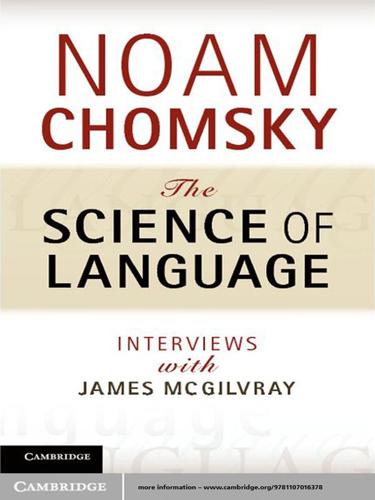
The Science of Language
by
Noam Chomsky
Published 24 Feb 2012
This goes right on into contemporary philosophy. A crucial, exciting topic in contemporary philosophy is [still] Kripkean essentialism – Putnam's version – which is based on questions like is water H2O? Well, it's like your intuitions about the ship of Theseus. You have whatever you have. It's not going to tell you anything about H2O (the stuff described by scientists) any more than talk about the ship of Theseus is going to tell you about ships from a physicist's point of view. It's telling you about how you look at and interpret the world. And these discussions are particularly odd, for one thing, because the alleged intuitions are mostly inside a philosophical cocoon.
…
Or what about if one of them changed into the other? Well, at that point you're getting to places where our intuitions just break down. There's no reason whatsoever that our commonsense intuitions should give answers to every question. There's a long tradition going back to Plato, Heraclitus, Plutarch, and on and on about the ship of Theseus. Over the centuries, people have made up impossible conundrums about when we would say that it is the same ship. A standard thing that you learn in your philosophy 101 course is that if you keep replacing the planks at sea, it's the same ship, and if somebody takes those same planks that you threw away and makes a replica of the original ship, somehow it's not the same ship.
…
As far as the physicist is concerned, if you take out a nail, it's a new ship. Well, the physicist's way, that's not the way we think about it. All this shows that we're just inquiring into our own internal conceptions, what we call common sense. It has a relation to the world, of course, but it's not the same thing. If these questions – what's the ship of Theseus, what's a person, what's a tree, and so on – if they're re-interpreted as they should be, cognitively, epistemologically rather than metaphysically, well, then, they can be explored as topics of cognitive science. What's the nature of our conceptual systems? And then we discover that it's true that persons have responsibilities and obligations, and trees don't.
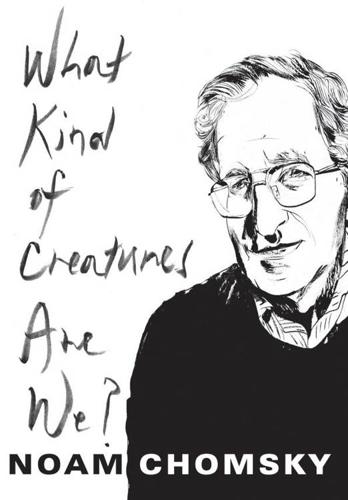
What Kind of Creatures Are We? (Columbia Themes in Philosophy)
by
Noam Chomsky
Published 7 Dec 2015
In my I-language, there is an internal entity London—not necessarily matching yours exactly—constituted of elements that provide perspectives for referring to aspects of the world, much as the features of the internal phonetic entity [ta] provide means for me to pronounce and interpret certain events in the world. In these terms, many classical paradoxes become difficult or impossible to formulate, from Plutarch’s Ship of Theseus to Kripke’s puzzles, all stated in terms of referentialist assumptions. As Norbert Hornstein suggests, we might reframe the observation, taking the problematic features of the paradoxes to be another argument against the referentialist assumptions that lead to them. Early investigation of these topics was concerned primarily with individuation: What makes an individual distinct from others?
…
See also referential properties On Liberty (Mill), 60–61 Opticks (Newton), 83, 107 origin of language: animal signals as unlikely source of, xviii–xix, 48; and appearance of Merge, xiii; vs. communication, 40; Darwin on, 2–3; focus on communication, as misguided, 14–15, 40; gradual evolution model, unlikelihood of, xviii–xix, 48; Jespersen on, 8; lack of detectable evidence on, 40; Lewontin on, xix, 39–40, 52; as mystery-for-humans, xix, 39–40, 52, 59; origin of atomic elements, as issue, 125–26; origin of infinite range of interpretable hierarchical expressions, as issue, 125; and phenotype, necessity of defining, xix, 6, 40, 41, 59; requirements for credible account of, 40–41; and SMT hypothesis, 25; as sudden, recent leap, xiii, 3, 25, 40; Tattersall on, 3, 25 other minds, as issue, and creative use of language, 93 Pannekoek, Anton, 63 panpsychism: Priestley’s rejection of, 116, 117; and Strawson, 115–16, 120–21 parliamentary tradition: as instrument of class rule, 68; in seventeenth-century England, xxii passivization, and communication vs. semantic interpretation, 22 Pauling, Linus, 109 Peirce, Charles Sanders: on abduction, xv, 27–28, 55–56; on limits on human cognition, xix, 28, 53, 105; and mysteries as roadblocks to inquiry, xx; on sign-object reference, 126 people, as guardians of public interest, 79–80 percepts as physical events, Russell on, 100–101, 102 Perrin, Jean Baptise, 23 person, as complex concept, 45–46 Peterloo massacre, 73 Petitto, Laura-Ann, 42–43 Petty, Sir William, 96–97 philosophy, contemporary: denial of mysteries by, xix; Stoljar on central problem of, 122–23; Strawson on hyperdualist intuitions of, 124, 127 philosophy, naturalization of in Hume, 106 philosophy of mind: and limits on human cognition, xvi–xvii; and mind-body problem, reengagement with, 111–12; questionable foundational assumptions of, 36; Stoljar on epistemological terms of, 122–23 phonetics, limited success of, 44 physicalism, Jackson on limitations of, 102 physics: and human perception, necessity of continuity between, 100, 102; Newtonian, delay of in supplanting Cartesian physics, 88; Russell on limits of, 100–103. See also chemistry, unification of with physics Plutarch, and Ship of Theseus paradox, 50 Poincaré, Henri, 108 Politics (Aristotle), 79 Popkin, Richard, 89–90 positivists, on collapse of mechanical philosophy, 88 pragmatic approach to inquiry, 53–54; eventual adoption of, as scientific routine, 90; and fundamental unintelligibility of world, 90–91; in language, and hope of eventual unity with, 127; and mysterianism, xx, 32–34, 53–54, 88–90, 104; and Newton, xx, 53, 88–89, 99; and Priestley, 114; Russell on, 90; in study of mind and language, 36, 109–11; tradition of, before Newton, 89–90 IN CHEMISTRY: and abandonment of erroneous conception of physical laws, 109; and eventual unity with physics, 36, 106–9, 124–25, 143n45 FOR MENTAL PHENOMENA, 86, 87, 89, 109–11; and hope of eventual unity with neuroscience, 36, 105–6, 109–11, 127; parallels of, with early Newtonian investigations, 86–87, 89; and possibility of incorrect reduction base, 89; Priestley on, 117 pragmatics, neo-Gricean, 127 Priestley, Joseph: and collapse of mechanical philosophy, 111–12; and humans as one substance, 114; on limits on human cognition, xvi–xvii, xix; on Locke, 111, 113, 120; and matter-spirit dualism, end of, 113–14; on mind, as conscious assembly of unconscious parts, 117; on mind, as emergent property of brain, 35, 111–17, 120, 121, 123; and mind-body problem, reconstitution of, 114–15; on operations of mind vs. its products, 118, 119; and pragmatic method, 114; on self, as concept, 117; on study of mind, 117–19; on thought as physical process, 35, 114–15 Principia (Newton), 83 private property, protection of: Aristotle on, 79; as goal of U.S. system, 76–78 problems, vs. mysteries, xv, 27–29; effort to sharpen boundary between, 53 progressives, mainstream, on democracy, 75–76, 80 property.
…
See also mysteries; pragmatic approach to inquiry scientific revolution: on limits of human cognition, 53–55, 59; and materialist world view, 82; and world as machine, 82 Searle, John, xvii, 35, 38, 102 self: independent existence of, as issue, 119–20; Priestley on, 117 self-interest, hindering of human development by, xxi semantic interpretation, vs. communication in optimally designed language, 18–19, 22–23 semantics: lack of, in natural language, 48; relegation of, to pragmatics, xviii sensorimotor interface (externalization): and Basic Property of Language, viii, 4; as basis of linearity in language, x, 12; as biologically prior to language, x, 12–13; as origin of variety and complexity of language, 125; as secondary to conceptual-intentional interface, xi, xviii, 14–15, 16, 24, 125. See also communication Shaftesbury, Anthony Ashley Cooper, third Earl of, 126 Shalom, Steven, 72 Shays’s Rebellion, 77 Shelley, Percy B., 73 Ship of Theseus paradox, 50 sign language, structural similarity of to spoken language, x, 13, 14 simplicity principle of scientific method, and computational procedure, xii–xiii, 16–17 slavery, and personhood, 46 Smith, Adam, xx–xxi, xxiii, 61–62, 71 Smith, Neil, 11–12 SMT. See strong minimalist thesis socialism, as term, 62–63 soul, nature of, and identity as construct of imagination, 52 sound, link of language to: in early views on nature of language, 5–6; persistence of view, 6.

The Fourth Age: Smart Robots, Conscious Computers, and the Future of Humanity
by
Byron Reese
Published 23 Apr 2018
Whenever that possibility is posed, the thought experiment of the ship of Theseus is sailed in. I will give you an abbreviated version: There is a famous ship in a museum. As pieces rot over the centuries, they are replaced. This happens so much that eventually no original piece of the ship remains. Is it still the same ship? The additional wrinkle to the problem is that all the rotted pieces have been saved in a storeroom and someone pieces them all back together to form a derelict ship of Theseus. What do we say then? There are two ships of Theseus? The point of the whole thing should be obvious: you are a breathing ship of Theseus. Given that your cells replace themselves, you literally aren’t the same matter you were a decade ago.
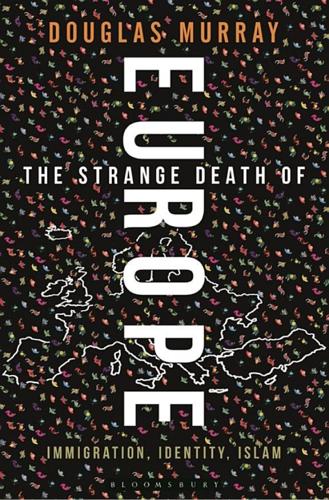
The Strange Death of Europe: Immigration, Identity, Islam
by
Douglas Murray
Published 3 May 2017
Yet the awareness that our culture is constantly, subtly changing has deep European roots. The philosophers of Ancient Greece understood the conundrum, summing it up most famously in the paradox of the Ship of Theseus. As recorded in Plutarch, the ship in which Theseus had sailed had been preserved by the Athenians who put in new timber when parts of the ship decayed. Yet was this not still the ship of Theseus even when it consisted of none of the materials in which he had sailed? We know that the Greeks today are not the same people as the Ancient Greeks. We know that the English are not the same today as they were a millennia ago, nor the French the French.
…
It is simply what the current situation looks like in much of Western Europe and what the demographic projections show the continent’s future to be. For although our societies integrated people better than some people feared, we are not after all such great melting pots that anything and anyone can be endlessly poured in with the results always coming out the same. To return to the analogy of the ship of Theseus, the ship can only be said to remain the ship if it remains recognisable. For that to happen, when the ship needs mending it needs to be repaired using recognisable parts that fit in with the whole. But European society today is ever less recognisable, and what chances it had to sustain the whole were lost when it chose to wage a war on its own design.
…
Rushdie) here, here Saudi Arabia here, here Schaeuble, Wolfgang here Scheffer, Paul here, here Schengen Agreement (1995) here, here Schnabel, Paul here school systems here, here, here, here, here Schopenhauer, Arthur here science here, here, here Scotland here see also Britain search-and-rescue missions here, here, here, here Second World War here, here, here, here, here, here see also Holocaust Selbekk, Vebjørn here self-criticism, European here, here, here, here, here see also racism, accusations of Self, Will here, here Serbia here sexual exploitation here, here, here see also rape and sexual assaults Shah, Asad here shallowness, European here, here, here, here Sharia law here, here Ship of Theseus paradox here, here Sicily here, here, here, here, here, here, here Skala Skamnias, Lesbos here slavery here, here Slovakia here, here Slovenia here Smith, Jacqui here smugglers, people- here, here, here, here, here, here, here, here, here, here social-security systems see welfare states, European Somalia/Somalians here, here, here, here, here, here Sonboly, Ali David here Sontag, Susan here Soros, George here South America here Soviet Union here, here, here Spain here, here, here, here, here Spem in Alium (T.
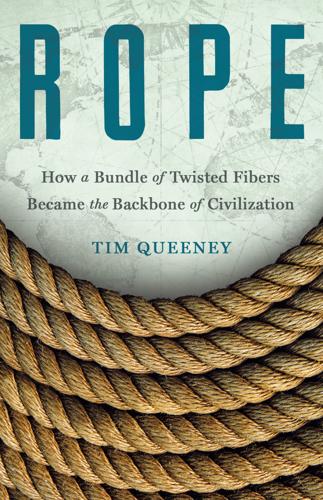
Rope: How a Bundle of Twisted Fibers Became the Backbone of Civilization
by
Tim Queeney
Published 11 Aug 2025
The treadwheel at Canterbury Cathedral in the Bell Harry Tower was used to lift repair materials as recently as the 1970s.23 When I spoke to Joel Hopkinson, who is head of estates and fabric at Canterbury Cathedral, he pointed out that the treadwheel in the tower at Canterbury is something of a ship of Theseus. This is the idea that if a wooden ship is maintained for a long period, it will need various parts replaced as they rot, until over time the entire ship has been renewed. This raises the question: Is it the same ship? Philosophers have pondered this question and devised many answers. The USS Constitution in Boston is an American example of a ship of Theseus. It carries the same name as the original 1797 frigate, but all its timbers have been replaced in more than two centuries of maintenance, repairs, and overhauls.
…
Sandstrom, Perry satellites scaffolds and cranes Schlack, Paul Schoening, Pete science Mars exploration neutrino observatory Science Advances Scotland Scott, Robert Seahenge Seale, Tom Seiko, Fujita Shakespeare, William Shelley, Mary Sherwin, Martin J. ships and boats building of caravels carracks caulking of clipper ships Egyptian galleys Greek iron and steel lashing in leaks in masts of naval stores for Norse Polynesian replacement of parts of, in ship of Theseus idea rigging on Roman sails of silk Simler, Josias Simon, William L. Sixtus V, Pope skipping rope slack-rope performers slavery Smith, Andrew Solomon, Frank Solomon, King South Pole space elevator spelunkers spirituality. See religion and spirituality Stage Rigging Handbook (Glerum) Statius Steele, Bill Steiner, Stan Stephen, James Fitzjames Stone, Derek Stone, James Stone Age tools Stonehenge Streather, Tony Studio 54 Theater Sultan Hasan mosque and madrasa Supple, Harry Suzman, James Swan, Pete Taiwan Talbye, Dorthy tar Tarbuck, Ken Taugwalder, Peter telegraph cables theater Theseus Thirty Years from Home (Leech) Thompson, Frank Thompson, Nainoa tightrope artists Time To Reach the Clouds (Petit) torture.

The Singularity Is Nearer: When We Merge with AI
by
Ray Kurzweil
Published 25 Jun 2024
After every phase of this experiment, you are happy with the procedure, and no one, including yourself, bothers to complain. Is the new You after each such replacement still you? Even at the end, once your brain is entirely digital? The question of how identity relates to replacing an object’s parts gradually over time dates back to a thought experiment first posed about 2,500 years ago, called the Ship of Theseus.[43] Ancient Greek philosophers imagined a wooden ship whose planks were slowly replaced with new planks, one by one. It seems quite natural to conclude that after the first plank is replaced, the ship itself is still the original ship. It may have a slightly different makeup, but we still talk about this transformation as a change to the original ship and not the creation of a new ship.
…
Now, once the original ship has 100 percent new parts, we reassemble all the old parts from storage into a ship again. Now which ship is the original? The one that continuously existed with only incremental changes but has no parts from the original? Or the one that was re-formed from the original parts? The Ship of Theseus is a fun thought experiment when it comes to ships or other “dead” objects, but it doesn’t have particularly high stakes. The identity of ships over time is ultimately a matter of human convention. Yet the problem assumes supremely high stakes when the objects in question are human beings. For most of us, it matters a great deal whether the person standing next to us really is our loved one or is just a Chalmersian zombie putting on a convincing show.
…
See also neural nets Perceptrons (Minsky and Papert), 27–28, 29 perils, 267–85 artificial intelligence, 278–85 biotechnology, 271–73 nanotechnology, 273–79 nuclear weapons, 268–70 personal appearance, 109, 263 personal computers (PCs), 131–33, 133, 139, 160 personal identity. See identity pessimism, 120–21 pesticides, 181, 202 petroleum, 59 philosophy of mind hard problem of consciousness, 80–82 Ship of Theseus, 91–92 photovoltaics, 129, 172–73, 175, 181, 214 global installed capacity, 155, 156 module cost per watt, 155 percentage of world electricity, 156 SolarWindow Technologies, 173 physicalism (materialism), 81–82 physics in First Epoch, 7–8, 68 rules of, 96–97 Standard Model of, 96–97, 335n Pinker, Steven, 112, 120, 151–53, 230–31 Pirsig, Robert M., 267 plant breeding, 179 Plato, 115 poetry, 58 Poggio, Tomaso, 14 polarization, 130, 230 policing, 150, 233 Polish-Lithuanian Commonwealth, 161 politics, 130 bad news bias and, 116 deepfake videos, 100 electrification and, 128–29 free will and, 82 physical scarcity and, 254 social safety net and, 224, 231 voting rights, 161–62 pollution, 150–51, 170, 185, 233 Pong (video game), 42, 71 popular opinion and progress, 111–21 population density, 171 positive feedback loop, 60, 132 poverty, 137–47, 153 declining rates, 111–12, 137–47, 140, 141 sanitation and, 127–28 US rates, 140, 140 world population, 117, 117–18 predetermination, 82, 86–88 prefrontal cortex, 73 price-performance of computation, 3, 3, 4, 15–16, 29, 40, 55, 56–58, 57, 61, 62, 63, 164–69, 165–66, 181–82, 211–13, 293–312 prime numbers, 15, 399n printing, 3D.

To Be a Machine: Adventures Among Cyborgs, Utopians, Hackers, and the Futurists Solving the Modest Problem of Death
by
Mark O'Connell
Published 28 Feb 2017
Randal had mentioned his name on several occasions during our discussions—both as someone broadly supportive of whole brain emulation and whose work was of significant relevance to that project—and Boyden had been a speaker at the Global Future 2045 event in New York the previous year. It was Boyden’s belief, he told me, that it would eventually be possible to build neuroprosthetic replacements for brain parts—which, if you take the Ship of Theseus view of things, is essentially the same as believing that whole brain emulation is possible. “Our goal is to solve the brain,” he said. He was referring here to the ultimate goal of neuroscience, which was to understand how the brain did what it did, how its billions of neurons, and the trillions of connections between them, organized themselves in such a way as to produce specific phenomena of consciousness.
…
I thought of Nate Soares saying there was “nothing special about carbon.” I had no idea whether it was true or not, this idea that every cell in our bodies was replaced on a seven-year cycle, but if it was true, it seemed like it would be a potential propaganda victory for transhumanism, for substrate independence, for the Ship of Theseus view of whole brain emulation. It was a vertiginous thought: that the person who had first read about transhumanism in Dublin ten years ago had no material connection to the person now sitting in a living room in Pittsburgh talking to a transhumanist about how all the cells of the body were replaced on a seven-year cycle—because if there was no such material connection, how could either of those people be me, my “self”?

Heart of the Machine: Our Future in a World of Artificial Emotional Intelligence
by
Richard Yonck
Published 7 Mar 2017
Synaptic weights and interconnectivity of dendritic connections are continually being altered, shifting who we are from moment to moment, both intellectually and emotionally. This has led some philosophers and cognitive scientists to suggest that continuity of self is an illusion. Obviously, the vast majority of us would strongly say otherwise. This paradox is illustrated in the Ship of Theseus thought experiment recorded by Plutarch in about 75 AD.7 In this, a wooden ship is restored one plank and part at a time. After the ship’s first plank has been changed, no one would dispute its being the same ship. The same goes for the second plank. Eventually every single piece on the ship has been replaced one at a time.
…
See elder care sentograph, 44 serotonin, 186, 221 Sergi, Giuseppe, 17–18 “Servants of the Overclass,” 171 service robots, 151 711th Human Performance Wing, US Air Force Research Lab, 128–129 sex aids, emotionally intelligent ethics of, 191–193 future uses for, 188–189 history of sex aids, 179–182 and human emotional bonding, 186–188 and objectophilia, 186–188 sex dolls, “”182–184, 193 sexbots, 184–186, 188, 190–193, 200, 236 virtual reality, 189–191 sex dolls, “dames de voyage,” 182–183 sexbots, 184–186, 188, 190–193, 200, 236 Sharkey, Noel, 130–131 Ship of Theseus (thought experiment), 206 shopping and data analytics services, 136–137 Sightcorp, 72 Silent Messages (Mehrabian), 25 Silent Talk program, 217 simulated annealing, 41 Singularity, 239, 242 Sinthetics, 184 Siri, 77 60 Minutes, 167 Skynet, 242 smart TVs, 144 social computing, 52–53 Social Robotics Project, 88 socialization and emotions, 21 socially assistive robots, 111–112, 118 The Society of Mind (Minsky), 247 Softbank, 82 Software as Service (SaaS), 65, 138 software development kits (SDKs), 65, 70, 72 Sojourner Rover, 84 somatic marker hypothesis, 34 Sony, 200 Space Invaders, 213 spammers, 141 Spielberg, Steven, 233–234 spindle neurons, 20, 247 squeezable mouse, 52 Stan Winston Studio, 85 Starlab, 217 Stout, Dietrich, 23 Strong Minimalist Thesis, 13 SUBNETS.
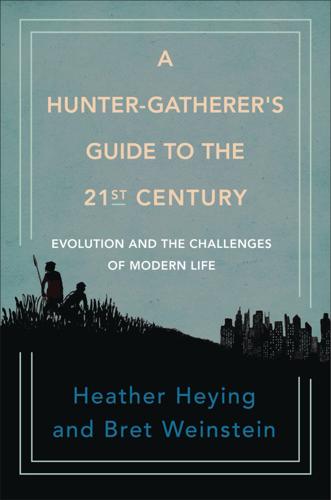
A Hunter-Gatherer's Guide to the 21st Century: Evolution and the Challenges of Modern Life
by
Heather Heying
and
Bret Weinstein
Published 14 Sep 2021
In general, those photos should not be on display for everyone to see, unless they clearly represent a particular moment in time that is not meant to be universal. We are being solidified by modernity into states that, in prior eras, would have been more ephemeral. Consider the philosophical question, first introduced by the ancient Greeks, of the ship of Theseus: If over time this ship has a plank replaced because of rot, then another, and another, such that ultimately every single original part has been replaced, is it still the ship of Theseus? Is it, in fact, the same ship? With an individual organism, even more than for a ship, the answer might be both yes in one sense and no in another. Yes, we have a continuous lifeline from our birth until our death.
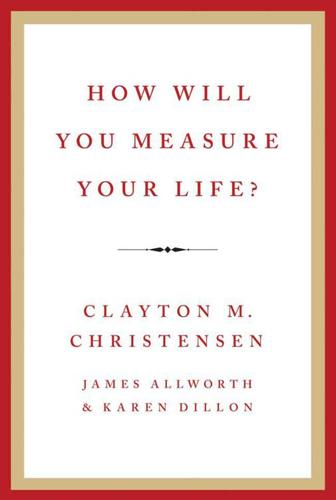
How Will You Measure Your Life?
by
Christensen, Clayton M.
,
Dillon, Karen
and
Allworth, James
Published 15 May 2012
Yet again, in outsourcing much of the work that formerly filled our homes, we have created a void in our children’s lives that often gets filled with activities in which we are not involved. And as a result, when our children are ready to learn, it is often people whom we do not know or respect who are going to be there. There’s a wonderful conundrum left to us by the Greeks. It was first put to print by the author Plutarch, and it’s known as the Ship of Theseus. As a tribute to the mythical founder of their city—famed for slaying the Minotaur—the Athenians committed to keeping Theseus’s ship seaworthy in the harbor of Athens. As parts of the boat decayed, they were replaced … until eventually, every last part of the boat had been changed. The conundrum was this: given that every last part of it had been replaced, was it still Theseus’s ship?

You Are Not a Gadget
by
Jaron Lanier
Published 12 Jan 2010
The new twist in Silicon Valley is that some people—very influential people—believe they are hearing algorithms and crowds and other internet-supported nonhuman entities speak for themselves. I don’t hear those voices, though—and I believe those who do are fooling themselves. Thought Experiments: The Ship of Theseus Meets the Infinite Library of Borges To help you learn to doubt the fantasies of the cybernetic totalists, I offer two dueling thought experiments. The first one has been around a long time. As Daniel Dennett tells it: Imagine a computer program that can simulate a neuron, or even a network of neurons.
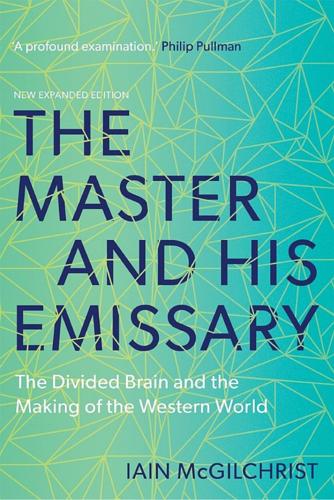
The Master and His Emissary: The Divided Brain and the Making of the Western World
by
Iain McGilchrist
Published 8 Oct 2012
Thought to have originated with Eubulides of Miletus (c. 350 BC). If one grain of sand is not a heap, and at no stage adding one more grain of sand is going to make the difference between not being a heap and being a heap, how can it ever be that (by, for example, the time 100,000 grains are reached) a heap has come into being? The Ship of Theseus paradox. Plutarch wrote in his life of Theseus: The ship wherein Theseus and the youth of Athens returned had thirty oars, and was preserved by the Athenians down even to the time of Demetrius Phalereus, for they took away the old planks as they decayed, putting in new and stronger timber in their place, insomuch that this ship became a standing example among the philosophers, for the logical question of things that grow; one side holding that the ship remained the same, and the other contending that it was not the same.4 The reference to Demetrius Phalereus dates this from about 300 BC.
…
According to the right-hemisphere view, it is a matter of a shift in context, and the coming into being of a Gestalt, an entity which has imprecisely defined bounds, and is recognised whole: the heap comes into being gradually, and is a process, an evolving, changing ‘thing’ (this problem is related to the Growing Argument). Failure to take into account context, inability to understand Gestalt forms, an inappropriate demand for precision where none can be found, an ignorance of process, which becomes a never-ending series of static moments: these are signs of left-hemisphere predominance. Or the Ship of Theseus. Here again the problem is caused by a belief that the whole is the sum of the parts, and disappears as the parts are changed. There is also a belief that there must necessarily come a ‘point’ in a process where identity changes. The fact that this type of paradox was known as the Growing Argument (auxanomenos logos) demonstrates that there is a difficulty here in dealing with all living, changing forms.
…
The impermanence of nature (shizen) is seen as the Buddhahood, or essence of the divine.64 In the West, with our recording apparatus of every kind, we value what we can grasp and hold. But life and everything living refuses this approach. It changes as we hold it. Japanese temples are seen as still the same temple though they are rebuilt every 20 years: presumably the Japanese would have had no problem answering the paradox of the Ship of Theseus (see p. 138 above), because they naturally see the world as a process rather than a collection of things – like Heraclitus’ river, always changing, but always itself. Why do we in the West think that ultimate value lies only in the immutable, in what is eternally the same? The idea emerges with Parmenides, and Plato gave wider currency to this view of the world derived from the left hemisphere, where all is static, known, unchanging.
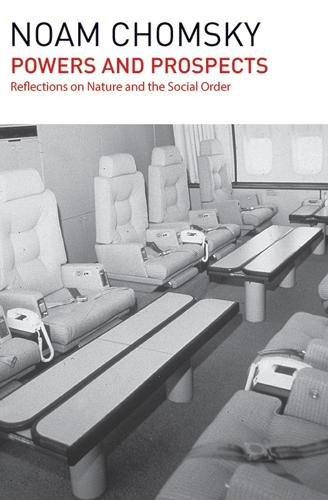
Powers and Prospects
by
Noam Chomsky
Published 16 Sep 2015
Long before Locke, Thomas Hobbes recognised that it ‘will be the same river which flows from one and the same fountain, whether the same water, or other water, or something else than water, flow from thence’. The identity of a thing depends on the manner of its generation, he concluded, an idea that goes back to Aristotle (and, as Hobbes observed, underlies the famous example of the ‘ship of Theseus’, which is the same ship even if each plank is replaced over time). No such notion enters into geology. Furthermore, these observations much understate the complexity of the concept river. Take the Charles River, which flows past my office. Not only might it remain the same river if it comes to be constituted mostly (perhaps entirely) of chemicals from factories upstream, as Hobbes pointed out, but also if its flow were reversed, or it were directed in a different course, or made to end up in a lake instead of flowing into the sea, or even divided into separate streams of water, possibly converging later on.
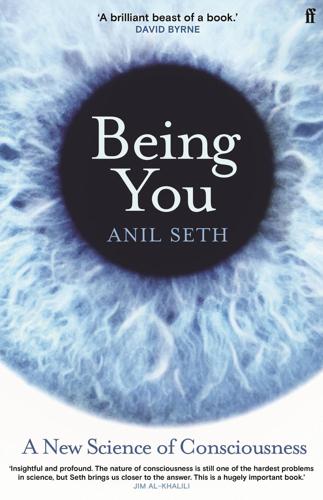
Being You: A New Science of Consciousness
by
Anil Seth
Published 29 Aug 2021
at the level of personal identity: Antonio Damasio highlights this aspect of selfhood in his book The Feeling of What Happens (Damasio, 2000). Contrary to the perception: James (1890), p. 242. * Even without teletransportation, the cells in our body are continuously turning over, most being replaced every ten years or so – a biological Ship of Theseus. This doesn’t seem to impact our sense of personal identity very much. † Doppelgänger hallucinations were popularised by Fyodor Dostoevsky in his 1846 novella The Double. Dostoevsky was known to suffer from severe epilepsy. ‡ The hippocampus is a small, curved structure lying deep in the medial temporal lobe, which has long been associated with memory consolidation.
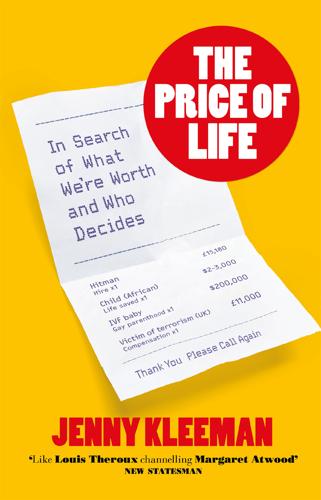
The Price of Life: In Search of What We're Worth and Who Decides
by
Jenny Kleeman
Published 13 Mar 2024
There’s a scene where Trigger’s really proud that he’d had his sweeping brush for twenty-five years. He said in that time he’d replaced the handle five times and the head ten times. So it wasn’t the same broom.’ I get it – the world’s most expensive weapons system is Trigger’s broom, and the Ship of Theseus. The jet gets a significant upgrade every four or five years, Cab says, keeping it at the cutting edge of capability. ‘I absolutely believe that the F-35 will be in service up until our published out-of-service date of 2069. As a nation, we have absolutely committed to this air system as a fifty-year project.’
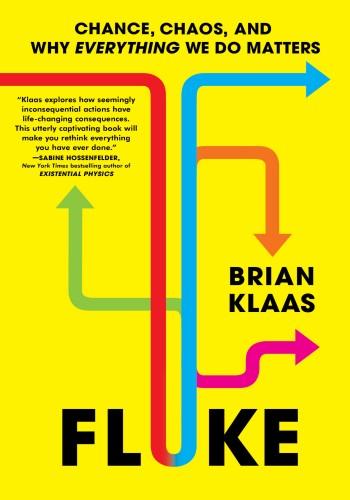
Fluke: Chance, Chaos, and Why Everything We Do Matters
by
Brian Klaas
Published 23 Jan 2024
The same parasite is often found in cats, meaning that humans who own cats are more likely to be infected, with some studies suggesting that it alters human behavior significantly. Roughly one in four humans is currently infected with toxoplasma. II. This thought experiment has parallels with the Ship of Theseus discussed by Plutarch in the second century AD, considering whether a ship that has all its components replaced, like for like, one by one, is still the same ship. CHAPTER 3 EVERYTHING DOESN’T HAPPEN FOR A REASON Why contingency reigns supreme in a world driven by chance and chaos In the closing passages of On the Origin of Species, Charles Darwin marveled at the astonishing explosion of complex life, progressing over endless eons, to us, as we moved “from so simple a beginning” to “endless forms most beautiful.”
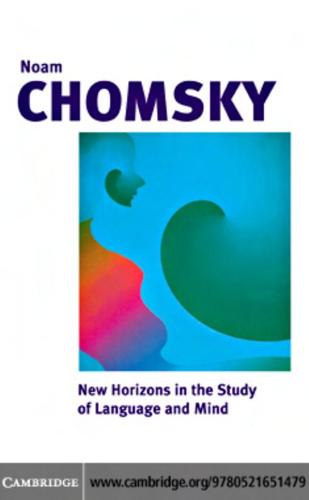
New Horizons in the Study of Language and Mind
by
Noam Chomsky
Published 4 Dec 2003
A man will always be the same, whose actions and thoughts proceed all from the same beginning of motion, namely, that which was in his generation; and that will be the same river which flows from one and the same fountain, whether the same water, or other water, or something else than water, flow from thence [as in the classical case of the ship of Theseus, Hobbes adds]; and that the same city, whose acts proceed continually from the same institution. (p. 16f.) The inquiry into personal identity from Locke to Hume was concerned with organic unity, a broader notion. A tree or an animal “differs from a mass of matter,” Locke noted, by virtue of the “organization of parts in one coherent body, partaking of one common life” with “continued organization” that comes from within, unlike artifacts.

Geek Heresy: Rescuing Social Change From the Cult of Technology
by
Kentaro Toyama
Published 25 May 2015
In spite of his optimism, Asimov – who served in the military during World War II and lived through the height of the Cold War – knew intimately that powerful technologies don’t trump Stone Age emotions.17 He worried that critics would see through his robot paternalism and pan him for painting human beings as a species in need of chaperoning. To this imagined criticism, he replied, “If we demand to be treated as adults, shouldn’t we act like adults? And when do we intend to start?”18 ACKNOWLEDGMENTS Like the ship of Theseus, the first draft of this book was replaced piece by piece, to the point that the final manuscript contains little of the initial text. I resisted many of the revisions, but looking back, I see how necessary they were, and for that I owe thanks to the many people who provided me with opportunity, advice, and critique.
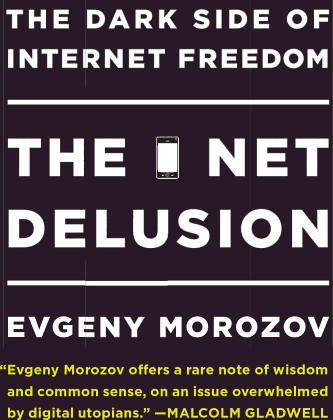
The Net Delusion: The Dark Side of Internet Freedom
by
Evgeny Morozov
Published 16 Nov 2010
One of the temptations that Western observers should avoid is to interpret the fact that authoritarian governments are adjusting their operating methods as a sign of democratization. This is a common fallacy among those who do not yet understand that it is perpetual change, not stagnation, that has enabled authoritarianism to survive for so long. A modern authoritarian state is much like the Ship of Theseus in Greek mythology: It’s been rebuilt so many times that even those navigating it are no longer sure if any of the original wood remains. Although prominent Western blogger-academics like Instapundit’s Glenn Reynolds laud the power of mobile phones and argue that “converting an unresponsive and murderous Stalinist/Maoist tyranny into something that responds to cellphone calls is not an achievement to be sneezed at,” we should not just pat ourselves on the back, clap hands, and praise the inexorable march of Internet freedom.

Robot Rules: Regulating Artificial Intelligence
by
Jacob Turner
Published 29 Oct 2018
Symbiosis shows us that the world often isn’t zero-sum — it doesn’t have to be humans versus AI, or humans versus centaurs, or humans versus other humans. Symbiosis is two individuals succeeding together not despite, but because of, their differences”.116 If humans can be augmented by AI, boundary issues will arise: when, if ever, might a human lose their protected status? This raises similar problems to the Roman historian Plutarch’s “Ship of Theseus Paradox”:The ship wherein Theseus and the youth of Athens returned from Crete had thirty oars, and was preserved by the Athenians down even to the time of Demetrius Phalereus, for they took away the old planks as they decayed, putting in new and stronger timber in their places, in so much that this ship became a standing example among the philosophers, for the logical question of things that grow; one side holding that the ship remained the same, and the other contending that it was not the same.117 This paradox, which questions the nature of continuous identity through shifting physical components, can be applied to combinations of humanity and AI.
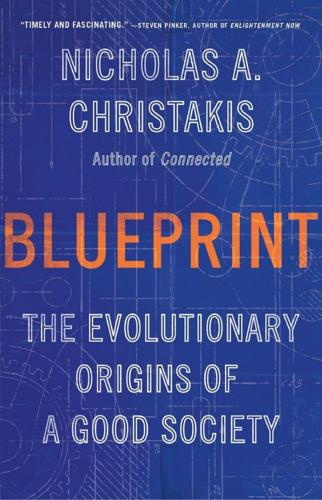
Blueprint: The Evolutionary Origins of a Good Society
by
Nicholas A. Christakis
Published 26 Mar 2019
Regarding recognizing siblings, see M. F. Dal Martello and L. T. Maloney, “Where Are Kin Recognition Signals in the Human Face?,” Journal of Vision 6 (2006): 1356–1366. 89. G. Palla, A.-L. Barabási, and T. Vicsek, “Quantifying Social Group Evolution,” Nature 446 (2007): 664–667. 90. This is known as the ship-of-Theseus problem in philosophy, so called because the Athenians allegedly maintained Theseus’s original ship in their harbor for centuries after he returned from killing the Minotaur in Crete, but all of its components were replaced at one point or another. A variation of it is the so-called family-knife problem, a reference to an heirloom knife that has had its handle and blade replaced several times over the centuries.